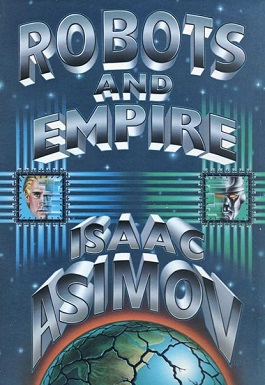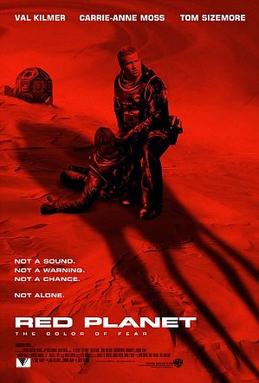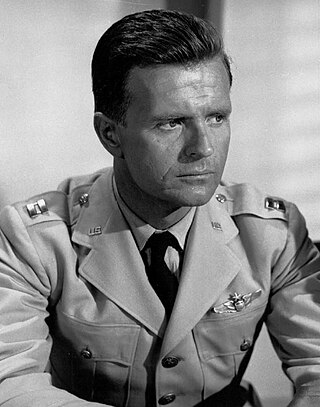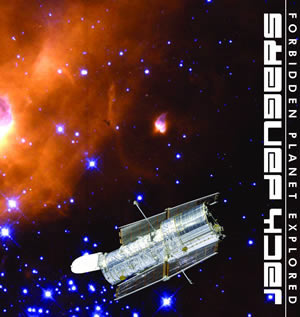
Forbidden Planet is a 1956 American science fiction film from Metro-Goldwyn-Mayer, produced by Nicholas Nayfack, and directed by Fred M. Wilcox from a script by Cyril Hume that was based on an original film story by Allen Adler and Irving Block. It stars Walter Pidgeon, Anne Francis, and Leslie Nielsen. Shot in Eastmancolor and CinemaScope, it is considered one of the great science fiction films of the 1950s, a precursor of contemporary science fiction cinema. The characters and isolated setting have been compared to those in William Shakespeare's The Tempest, and the plot contains certain happenings analogous to the play, leading many to consider it a loose adaptation.

Robby the Robot is a fictional character and science fiction icon who first appeared in the 1956 film Forbidden Planet. He made a number of subsequent appearances in science fiction films and television programs, which has given him the distinction as "the hardest working robot in Hollywood".

Return to the Forbidden Planet is a jukebox musical by Bob Carlton based on the 1956 science fiction film Forbidden Planet, which, in turn, is loosely based on Shakespeare's play The Tempest. The show features a score of 1950s and 1960s rock and roll classics and dialogue largely adapted from well-known passages from Shakespeare.

Science fiction is a film genre that uses speculative, fictional science-based depictions of phenomena that are not fully accepted by mainstream science, such as extraterrestrial lifeforms, spacecraft, robots, cyborgs, dinosaurs, mutants, interstellar travel, time travel, or other technologies. Science fiction films have often been used to focus on political or social issues, and to explore philosophical issues like the human condition.

Robots and Empire is a science fiction novel by the American author Isaac Asimov, published by Doubleday Books in 1985. It is part of Asimov's Robot series, which consists of many short stories and five novels.

"The Ugly Little Boy" is a science fiction short story by American writer Isaac Asimov. The story first appeared in the September 1958 issue of Galaxy Science Fiction under the title "Lastborn", and was reprinted under its current title in the 1959 collection Nine Tomorrows. The story deals with a Homo neanderthalensis child which is brought to the future by means of time travel. Robert Silverberg later expanded it into a novel with the same title published in 1992.
Edmund Cooper was an English poet and prolific writer of speculative fiction, romances, technical essays, several detective stories, and a children's book. These were published under his own name and several pen names.
"Requiem for Methuselah" is the nineteenth episode of the third season of the American science fiction television series Star Trek. Written by Jerome Bixby and directed by Murray Golden, it was first broadcast on February 14, 1969.

Red Planet is a 2000 science fiction action film directed by Antony Hoffman. The film stars Val Kilmer, Carrie-Anne Moss, and Tom Sizemore.
Planet of Evil is the second serial of the 13th season of the British science fiction television series Doctor Who. It was first broadcast in four weekly parts on BBC1 from 27 September to 18 October 1975.
The Invisible Enemy is the second serial of the 15th season of the British science fiction television series Doctor Who, which was first broadcast in four weekly parts on BBC1 from 1 to 22 October 1977. The serial introduced the robot dog K9, voiced by John Leeson. In the serial, an intelligent virus intends to spread across the universe after finding a suitable spawning location on the moon Titan.

Philip Abbott was an American character actor. He appeared in several films and numerous television series, including a lead role as Arthur Ward in the crime series The F.B.I. Abbott was also the founder of Theatre West in Los Angeles.

Space Ace, also known as Uchuu Ace, is a Japanese science fiction manga series written and illustrated by Tatsuo Yoshida and serialized in Shueisha's Shōnen Book magazine from June 1964 to May 1966. It was adapted into an anime television series by Tatsunoko Productions and aired on Fuji TV from May 8, 1965, to April 28, 1966. Anime Sols attempted to crowdfund the series in 2014.

The Lost Planet is a 1953 American science fiction serial film 15-chapter serial which has the distinction of being the last interplanetary-themed sound serial ever made. It was directed by Spencer Gordon Bennet with a screenplay by George H. Plympton and Arthur Hoerl. It appears to have been planned as a sequel to the earlier chapterplay Captain Video: Master of the Stratosphere and shares many plot-points, props and sets, as well as some of the same cast. However, the Video Rangers do not appear, and their uniforms are instead worn by "slaves" created electronically by Reckov, the dictator of the Lost Planet with the help of mad scientist Dr. Grood and enslaved "good" scientist Professor Dorn.

The Mysterians is a 1957 Japanese epic science fiction film directed by Ishirō Honda, with special effects by Eiji Tsuburaya. Produced and distributed by Toho Co., Ltd., it is the first Honda-Tsuburaya collaboration filmed in both color and TohoScope, and stars Kenji Sahara, Yumi Shirakawa, Momoko Kōchi, Akihiko Hirata, Yoshio Tsuchiya, Susumu Fujita, and Takashi Shimura, with Haruo Nakajima and Katsumi Tezuka as Mogera. In the film, Earth's defense forces unite to combat an extraterrestrial race that desires to intermarry with human women and settle on the planet.

Forbidden Planet Explored is a double album by Jack Dangers. The first CD is a live performance of the soundtrack to Forbidden Planet while the second CD is sci-fi sound effects.
Robert Kinoshita was an American artist, art director, set and production designer who worked in the American film and television industries from the 1950s through the early 1980s.

Tobor the Great is a 1954 independently made American black-and-white science fiction film, produced by Richard Goldstone, directed by Lee Sholem, and starring Charles Drake, Karin Booth, and Billy Chapin. The film was written by Carl Dudley and Philip MacDonald and was distributed by Republic Pictures.
AI takeover—the idea that some kind of artificial intelligence may supplant humankind as the dominant intelligent species on the planet—is a common theme in science fiction. Famous cultural touchstones include Terminator and The Matrix.












